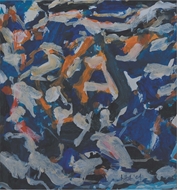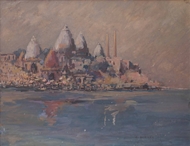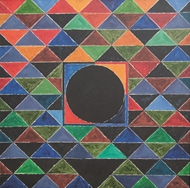![]() Significant Indian Art
Significant Indian Art
![]() Significant Indian Art
SYED HAIDER RAZA (1922 - 2016)
Significant Indian Art
SYED HAIDER RAZA (1922 - 2016)
RELATED LOTS
CONTACT US
Catalogue & Viewing
Lot Closed
Accounts & Shipping
Lot Closed
-
Literature
 Literature
Literature

“….For all the tragic intensity of its smouldering fires, and the glare of its greenery, the world of Raza hangs in a torrent of potentialities, amid the contending powers of darkness and light. Notwithstanding the storms of life, the artist, true to himself, has acquired the gift of serenity; he has achieved the inexpressible plenitude, which in the Arabian poem, is born of the reiterated syllable signifying Night.”
- Jacques LassaigneIt was Raza’s ambition “to see French art; to visit Europe and find a vital center of art where I could live and work and think.” His wish was fulfilled in October 1950, when he went to study at the École Nationale Supérieure des Beaux-Arts in Paris, on a Government of France scholarship. After his studies, he travelled across Europe and continued to live and exhibit his work in Paris. His experimentation with the current traits of Western Modernism continued, moving from Expressionist modes towards greater abstraction. In 1956 he was awarded the Prix de la critique in Paris. He was the first non-French artist to receive this honour.
Enamoured by the bucolic countryside in France, Raza strived to capture its rolling terrain and quaint village architecture using gestural brushstrokes and heavy applications of impasto. It was a stylistic device that marked his 1970s abstractions. The same is exemplified in this 1973 painting. A close inspection of the canvas reveals underlying layers of fresh colours that Raza adroitly manipulated in places to bring out an intense climax. Each of the colours retain their stark identity in the hands of a master ‘colourist’. In his own words Raza stated - "My work is my own inner experience and involvement with the mysteries of nature and form which is expressed in colour, line, space and light".



